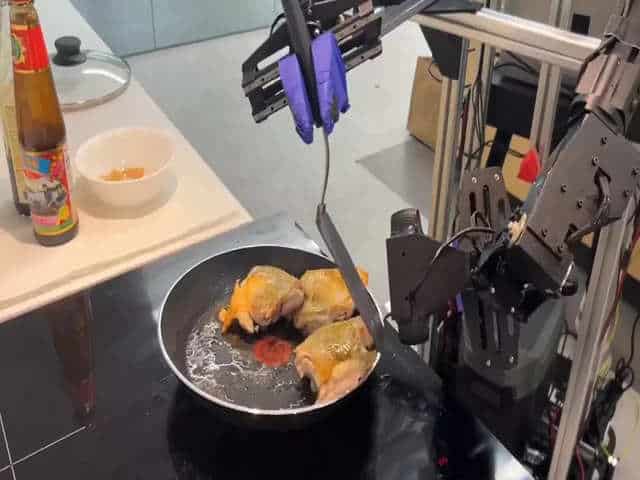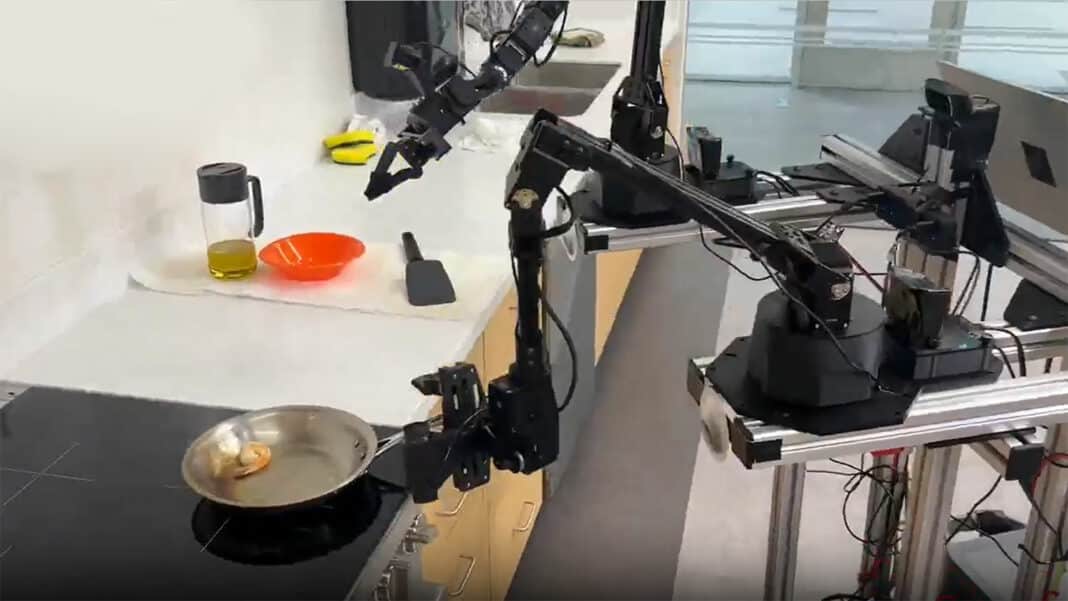In the collective imagination, the idea of the robot butler has always been alive: an automaton that can help around the house by doing things like cooking, tidying up, etc. Science fiction? Once. Now it's perspective. And the work of Stanford and Google DeepMind falls into this perspective: it is called Mobile ALOHA.
This special robot can learn to do complex tasks, such as preparing food or organizing objects, simply by watching someone do it for a while. This "embryo" of a robot butler does not (yet) have a humanoid body, or futuristic colored lights: however, it stands out for two things. Two decisive things. Which? Ability to learn quickly and affordable cost. This makes you understand how important this breakthrough in robotic technology is.

Innovation in home robotics
Mobile ALOHA is an excellent example of how technological innovation is transforming the concept of home robotics. Traditionally, robots were seen as rigid tools, suited to specific, repetitive tasks. Google and Stanford's project challenges this perception, demonstrating unprecedented versatility and adaptability.
This aspiring butler can learn to perform a variety of household tasks, from simple ones like tidying up, to more complex ones like cooking, paving the way for new possibilities in home automation. And now, a few words about his “method” for learning things.
The robot butler's two tricks up the sleeve
One of the most revolutionary aspects of Mobile ALOHA is its ability to learn by imitation. With only 50 demonstrations, the robot is able to assimilate and reproduce complex actions. That's an improvement of more than 90%, researchers say. This approach to learning is significantly more effective than traditional robot programming methods, which require complex code and detailed setup. The imitation learning method not only simplifies the training process, but also makes it more intuitive and natural.
Another key aspect of Mobile ALOHA is its cost. Unlike other robotic systems that can be prohibitively expensive, this one is designed to be affordable. It is the path to wider adoption of robotics in homes, making the technology accessible to a wider audience. Some, however, it is already getting ready.
A future of human-robot collaboration
The success of Mobile ALOHA points to a future where human-robot collaboration becomes an integral part of everyday life. Instead of replacing human labor, these robots are designed to assist and improve our daily tasks, making life easier and more efficient. This type of collaboration has the potential to transform not only how we handle household chores, but also how we perceive the role of technology in our lives.
What about work, particularly in sectors related to household chores? It is essential that, alongside technological development, policies and regulations are developed to ensure that innovation proceeds responsibly, without causing unwanted unemployment or other negative social impacts.
Robot butler: do we have any positive aspects?
It sounds premature to say it in this field, but there are not only lost jobs. Among those that will be born, apart from the maintenance and production of these systems, learning by imitation opens up a whole series of "trainers" with the task of supporting (in person or remotely) the robot butler to teach him to work on the better in each house different from the other.
However, despite the success of Mobile ALOHA, the road to widespread adoption of advanced home robots is still long and presents several challenges. The main one is the need to ensure that these systems are safe and reliable in a wide range of home scenarios. Additionally, it is critical to consider human interaction with these robots to ensure they are intuitive to use for people of all ages and abilities.


